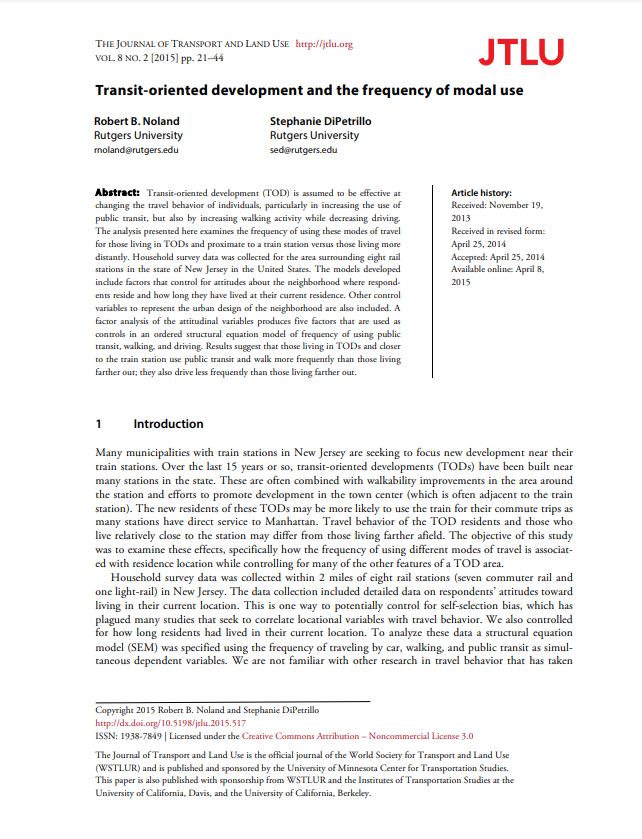Abstract
Transit-oriented development (TOD) is assumed to be effective at changing the travel behavior of individuals, particularly in increasing the use of public transit, but also by increasing walking activity while decreasing driving. The analysis presented here examines the frequency of using these modes of travel for those living in TODs and proximate to a train station versus those living more distantly. Household survey data was collected for the area surrounding eight rail stations in the state of New Jersey in the United States. The models developed include factors that control for attitudes about the neighborhood where respondents reside and how long they have lived at their current residence. Other control variables to represent the urban design of the neighborhood are also included. A factor analysis of the attitudinal variables produces five factors that are used as controls in an ordered structural equation model of frequency of using public transit, walking, and driving. Results suggest that those living in TODs and closer to the train station use public transit and walk more frequently than those living farther out; they also drive less frequently than those living farther out.
